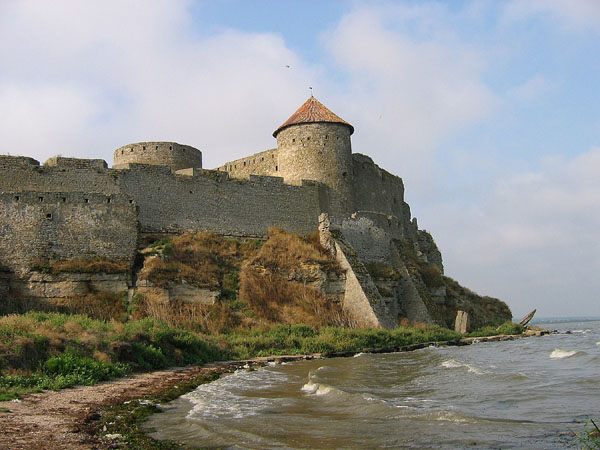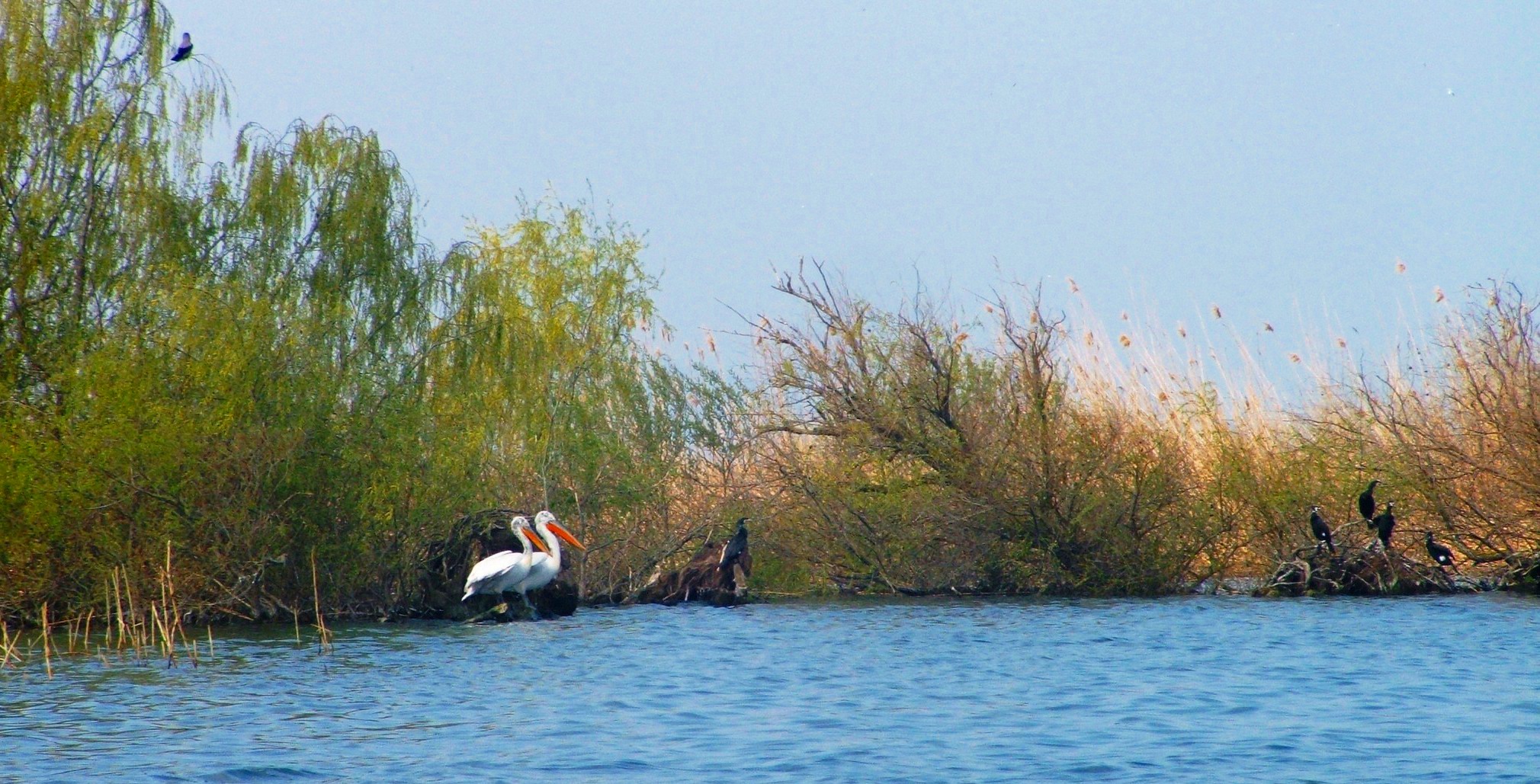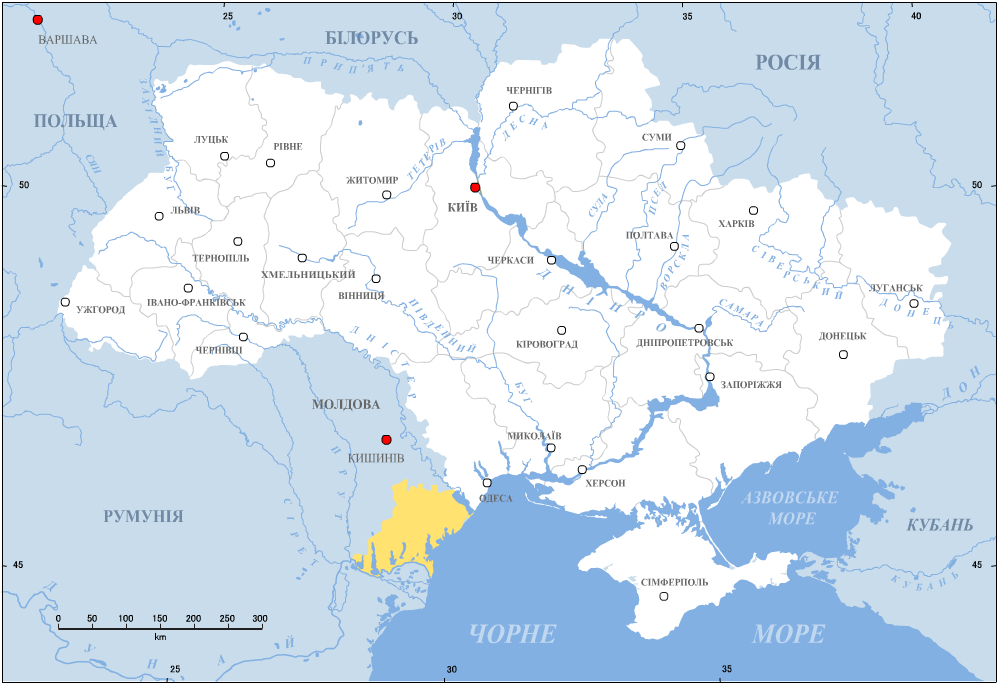|
Kiliya
Kiliia or Kilia ( uk, Кілія́, translit=Kiliia, ; ro, Chilia Nouă) is a town in Izmail Raion, Odesa Oblast of southwestern Ukraine. It hosts the administration of Kiliia urban hromada, one of the hromadas of Ukraine. Kiliia is located in the Danube Delta, in the Bessarabian historic district of Budjak; across the river lies the Romanian town of Chilia Veche (Old Kiliia). The Chilia branch of the Danube river, which separates Ukraine from Romania, is named after it. Population: History A town on the Romanian side of the Chilia branch of the Danube, now known as '' Chilia Veche'' ( uk, Cтapa Кілія, translit. ''Stara Kiliia'') or "Old Chilia", was founded by the Greek Byzantines – κελλία, ''kellia'' in Greek being the equivalent of "granaries", a name first recorded in 1241, in the works of the Persian chronicler Rashid-al-Din Hamadani. Kiliia is therefore sometimes referred to as ''Nova Kiliia'' meaning "New Kiliia". In the place that is now Kiliia, a l ... [...More Info...] [...Related Items...] OR: [Wikipedia] [Google] [Baidu] |
Odesa Oblast
Odesa Oblast ( uk, Оде́ська о́бласть, translit=Odeska oblast), also referred to as Odeshchyna ( uk, Оде́щина) is an oblast (province) of southwestern Ukraine, located along the northern coast of the Black Sea. Its administrative centre is the city of Odesa ( uk, Одеса). Population: The length of coastline (sea-coast and estuaries) reaches , while the state border stretches for .Tell about Ukraine. Odessa Oblast 24 Kanal (youtube). The region has eight seaports, over of s, and five of the biggest lakes in Ukraine. One of the largest, Yalpuh Lake, is as ... [...More Info...] [...Related Items...] OR: [Wikipedia] [Google] [Baidu] |
Danube Delta
The Danube Delta ( ro, Delta Dunării, ; uk, Дельта Дунаю, Deľta Dunaju, ) is the second largest river delta in Europe, after the Volga Delta, and is the best preserved on the continent. The greater part of the Danube Delta lies in Romania ( Tulcea County), with a small part in Ukraine ( Odessa Oblast). Its approximate surface area is , of which is in Romania. With the lagoons of Razim–Sinoe ( with water surface), located south of the main delta, the total area of the Danube Delta is . The Razim–Sinoe lagoon complex is geologically and ecologically related to the delta proper; the combined territory is listed as a World Heritage Site. Geography and geology The modern Danube Delta began to form after 4000 BCE in a bay of the Black Sea when the sea rose to its present level. A sandy barrier blocked the Danube bay where the river initially built its delta. Upon filling the bay with sediment, the delta advanced outside this barrier-blocked estuary after 3 ... [...More Info...] [...Related Items...] OR: [Wikipedia] [Google] [Baidu] |
Budjak
Budjak or Budzhak ( Bulgarian and Ukrainian: Буджак; ro, Bugeac; Gagauz and Turkish: ''Bucak''), historically part of Bessarabia until 1812, is a historical region in Ukraine and Moldova. Lying along the Black Sea between the Danube and Dniester rivers, this sparsely populated multi-ethnic 600,000-people region of is located in the southern part of historical Bessarabia. Nowadays, the larger part of the region is included in Ukraine's Odesa Oblast, while the rest is included in the southern districts of Moldova. The region is bordered to the north by the rest of Moldova, to the west and south by Romania, and to the east by the Black Sea and the rest of Ukraine. Name and geography Historically, Budjak was the southeastern steppe region of Moldavia. Bordered by the northern Trajan's Wall at its north end, by the Danube river and Black Sea to its south, by Tigheci Hills (just east of the Prut River) to the west, and Dniester River to the east, it was known as ''histor ... [...More Info...] [...Related Items...] OR: [Wikipedia] [Google] [Baidu] |
Chilia Branch
The Chilia branch (; ) is one of three main distributary channels of the river Danube that contributes to forming the Danube Delta. Lying at the northernmost area of the delta, the distributary creates a natural border between Romania and Ukraine (see Romania-Ukraine border) and is named after the two towns carrying the same name, located across from one another on both banks: Kiliya, on the northern, Ukrainian bank and Chilia Veche (Old Chilia) on the southern, Romanian bank. The other two main branches of the Danube are the Sulina branch and the Sfântu Gheorghe branch. The Chilia branch begins at the Ismail Islet where Danube splits on Chilia branch and Sulina branch and ends near the town of Vylkove where Chilia branch splits further into Ochakove distributary (eastward) and Old Istambul distributary (southward). Chilia branch is long. The flow at the entrance into the delta is of 6,350 m3/s; the Chilia branch carries between 58 and 60 percent of this flow ... [...More Info...] [...Related Items...] OR: [Wikipedia] [Google] [Baidu] |
Chilia Veche
Chilia Veche (Romanian pronunciation: /kiˈlija ˈveˈke/; meaning ''Old Chilia''; uk, Стара Кілія, translit=Stara Kiliia) is a commune in Tulcea County, Northern Dobruja, Romania, in the Danube Delta. It gave its name to the Chilia branch of the Danube, which separates it from Ukraine. It is composed of four villages: Câșlița, Chilia Veche, Ostrovu Tătaru and Tatanir. Founded by the Greek Byzantines, it was given its name after the word for "granaries" - , ''kellia'', recorded earliest in 1241 in the works of Persian chronicler Rashid al-Din. Some scholars consider the mediaeval Genoese trade centre known as ''Lycostomo'' () was also located here. A town on the other side of the Danube, now in Ukraine, known as '' Novo Kilia'' ( ro, Chilia Nouă) or "Newer Chilia", was built by Stephen the Great of Moldavia in order to counteract the Ottoman Empire The Ottoman Empire, * ; is an archaic version. The definite article forms and were synonymous * and ... [...More Info...] [...Related Items...] OR: [Wikipedia] [Google] [Baidu] |
Danube
The Danube ( ; ) is a river that was once a long-standing frontier of the Roman Empire and today connects 10 European countries, running through their territories or being a border. Originating in Germany, the Danube flows southeast for , passing through or bordering Austria, Slovakia, Hungary, Croatia, Serbia, Romania, Bulgaria, Moldova, and Ukraine before draining into the Black Sea. Its drainage basin extends into nine more countries. The largest cities on the river are Vienna, Budapest, Belgrade and Bratislava, all of which are the capitals of their respective countries; the Danube passes through four capital cities, more than any other river in the world. Five more capital cities lie in the Danube's basin: Bucharest, Sofia, Zagreb, Ljubljana and Sarajevo. The fourth-largest city in its basin is Munich, the capital of Bavaria, standing on the Isar River. The Danube is the second-longest river in Europe, after the Volga in Russia. It flows through much of C ... [...More Info...] [...Related Items...] OR: [Wikipedia] [Google] [Baidu] |
Kiliia Urban Hromada
Kiliia or Kilia ( uk, Кілія́, translit=Kiliia, ; ro, Chilia Nouă) is a town in Izmail Raion, Odesa Oblast of southwestern Ukraine. It hosts the administration of Kiliia urban hromada, one of the hromadas of Ukraine. Kiliia is located in the Danube Delta, in the Bessarabian historic district of Budjak; across the river lies the Romanian town of Chilia Veche (Old Kiliia). The Chilia branch of the Danube river, which separates Ukraine from Romania, is named after it. Population: History A town on the Romanian side of the Chilia branch of the Danube, now known as ''Chilia Veche'' ( uk, Cтapa Кілія, translit. ''Stara Kiliia'') or "Old Chilia", was founded by the Greek Byzantines – κελλία, ''kellia'' in Greek being the equivalent of "granaries", a name first recorded in 1241, in the works of the Persian chronicler Rashid-al-Din Hamadani. Kiliia is therefore sometimes referred to as ''Nova Kiliia'' meaning "New Kiliia". In the place that is now Kiliia, a la ... [...More Info...] [...Related Items...] OR: [Wikipedia] [Google] [Baidu] |
Wallachia
Wallachia or Walachia (; ro, Țara Românească, lit=The Romanian Land' or 'The Romanian Country, ; archaic: ', Romanian Cyrillic alphabet: ) is a historical and geographical region of Romania. It is situated north of the Lower Danube and south of the Southern Carpathians. Wallachia is traditionally divided into two sections, Muntenia (Greater Wallachia) and Oltenia (Lesser Wallachia). Dobruja could sometimes be considered a third section due to its proximity and brief rule over it. Wallachia as a whole is sometimes referred to as Muntenia through identification with the larger of the two traditional sections. Wallachia was founded as a principality in the early 14th century by Basarab I after a rebellion against Charles I of Hungary, although the first mention of the territory of Wallachia west of the river Olt dates to a charter given to the voivode Seneslau in 1246 by Béla IV of Hungary. In 1417, Wallachia was forced to accept the suzerainty of the Ottoman Emp ... [...More Info...] [...Related Items...] OR: [Wikipedia] [Google] [Baidu] |
Bessarabia
Bessarabia (; Gagauz: ''Besarabiya''; Romanian: ''Basarabia''; Ukrainian: ''Бессара́бія'') is a historical region in Eastern Europe, bounded by the Dniester river on the east and the Prut river on the west. About two thirds of Bessarabia lies within modern-day Moldova, with the Ukrainian Budjak region covering the southern coastal region and part of the Ukrainian Chernivtsi Oblast covering a small area in the north. In the aftermath of the Russo-Turkish War (1806–1812), and the ensuing Peace of Bucharest, the eastern parts of the Principality of Moldavia, an Ottoman vassal, along with some areas formerly under direct Ottoman rule, were ceded to Imperial Russia. The acquisition was among the Empire's last territorial acquisitions in Europe. The newly acquired territories were organised as the Bessarabia Governorate of the Russian Empire, adopting a name previously used for the southern plains between the Dniester and the Danube rivers. Following the Crim ... [...More Info...] [...Related Items...] OR: [Wikipedia] [Google] [Baidu] |
Rashid-al-Din Hamadani
Rashīd al-Dīn Ṭabīb ( fa, رشیدالدین طبیب; 1247–1318; also known as Rashīd al-Dīn Faḍlullāh Hamadānī, fa, links=no, رشیدالدین فضلالله همدانی) was a statesman, historian and physician in Ilkhanate Iran."Rashid ad-Din" ''Encyclopædia Britannica''. 2007. Encyclopædia Britannica Online. Accessed 11 April 2007. He was born in 1247 into a Persian Jewish family from Hamadan. Having converted to Islam by the age of 30, Rashid al-Din became the powerful |
Republic Of Genoa
The Republic of Genoa ( lij, Repúbrica de Zêna ; it, Repubblica di Genova; la, Res Publica Ianuensis) was a medieval and early modern maritime republic from the 11th century to 1797 in Liguria on the northwestern Italian coast. During the Late Middle Ages, it was a major commercial power in both the Mediterranean Sea and the Black Sea. Between the 16th and 17th centuries it was one of the major financial centers in Europe. Throughout its history, the Genoese Republic established numerous colonies throughout the Mediterranean and the Black Sea, including Corsica from 1347 to 1768, Monaco, Southern Crimea from 1266 to 1475 and the islands of Lesbos and Chios from the 14th century to 1462 and 1566 respectively. With the arrival of the early modern period, the Republic had lost many of its colonies, and had to shift its interests and focus on banking. This decision would prove successful for Genoa, which remained as one of the hubs of capitalism, with highly developed ban ... [...More Info...] [...Related Items...] OR: [Wikipedia] [Google] [Baidu] |
Stephen The Great
Stephen III of Moldavia, most commonly known as Stephen the Great ( ro, Ștefan cel Mare; ; died on 2 July 1504), was Voivode (or Prince) of Moldavia from 1457 to 1504. He was the son of and co-ruler with Bogdan II, who was murdered in 1451 in a conspiracy organized by his brother and Stephen's uncle Peter III Aaron, who took the throne. Stephen fled to Hungary, and later to Wallachia; with the support of Vlad III Țepeș, Voivode of Wallachia, he returned to Moldavia, forcing Aaron to seek refuge in Poland in the summer of 1457. Teoctist I, Metropolitan of Moldavia, anointed Stephen prince. He attacked Poland and prevented Casimir IV Jagiellon, King of Poland, from supporting Peter Aaron, but eventually acknowledged Casimir's suzerainty in 1459. Stephen decided to recapture Chilia (now Kiliia in Ukraine), an important port on the Danube, which brought him into conflict with Hungary and Wallachia. He besieged the town during the Ottoman invasion of Wallachia in 1462, bu ... [...More Info...] [...Related Items...] OR: [Wikipedia] [Google] [Baidu] |









